Dehydrating Carrots
This post may contain affiliate links, view our disclosure policy for details.
Dehydrating carrots at home is pretty simple. Carrots are an important ingredient to have on hand. If you want to be able to store them at room temperature for a long period of time, dehydrating carrots is a good option.
Carrots are a big part of this homestead. I think that it all started when the kids were little and found their way to the garden. For some reason pulling carrots from the soft soil was more satisfying than any other garden activity for them.
Carrots are not the easiest crop to grow. In fact, it took me years to perfect my carrot-growing system but it was well worth it (read more about growing carrots and about thinning carrots). Now I plant carrots multiple times a year and we can eat our own carrots pretty much year-round.
Dehydrating Carrots at Home…

Of course, like any other homesteader, when you have a large supply of a certain vegetable or fruit you always try to find all the possible ways to preserve it. So, in the past, we learned how to can carrots, and how to freeze carrots, and how to freeze shredded carrots (so they are ready for carrot cake), and today it’s time to dehydrate carrots!

Ingredients…
- Carrots – Any variety.
Kitchen Tools…
- Knife or kitchen mandoline
- Cutting board
- Pot to boil water in – for blanching the carrots.
- Over the sink strainer – this is easier for me to use (you’ll see below how I use it. But you can also use a skimmer ladle and scoop the carrots from the hot water into a large mixing bowl of ice water.
- Dehydrator – I am using a nice dehydrator that allows me to control the temperature and produces a better end result (it also has a timer which means I can set it and forget it!). If you don’t have one of those, you can still dehydrate carrots in the oven or in a cheap (no temperature control) dehydrator. More on this in the FAQ section below.
- Air tight storage container (I use jars)
Dehydrating Carrots Step By Step…
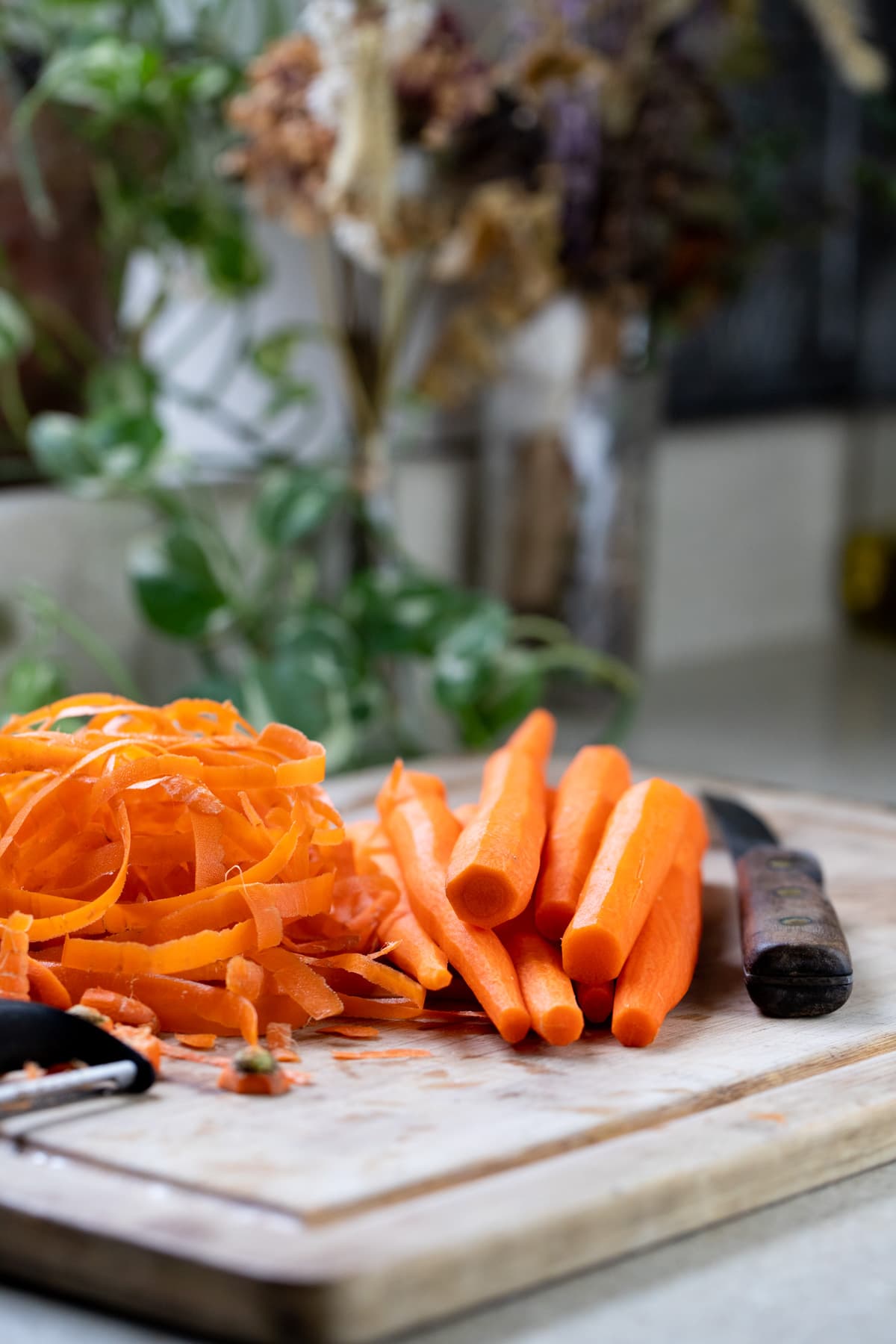


Step one – prep the carrots. Always wash and peel your carrots (the skin sometimes contains bacteria that can interfere with long-term preservation). Once your carrots are clean, there are three ways to cut them for dehydration…
- Cube them
- Slice them into coins
- Or shred them
If you are dehydrating tiny baby carrots, you can sometimes leave them whole but it’s usually better to choose one of the options above. I chose to slice my carrots into coins that are about 1/4 inch thick or a little thinner. I used a kitchen mandoline to do that. You can use a knife but the mandoline not only makes it easier and quicker, but it also slices the carrots uniformly so all the slices dry in the same amount of time.
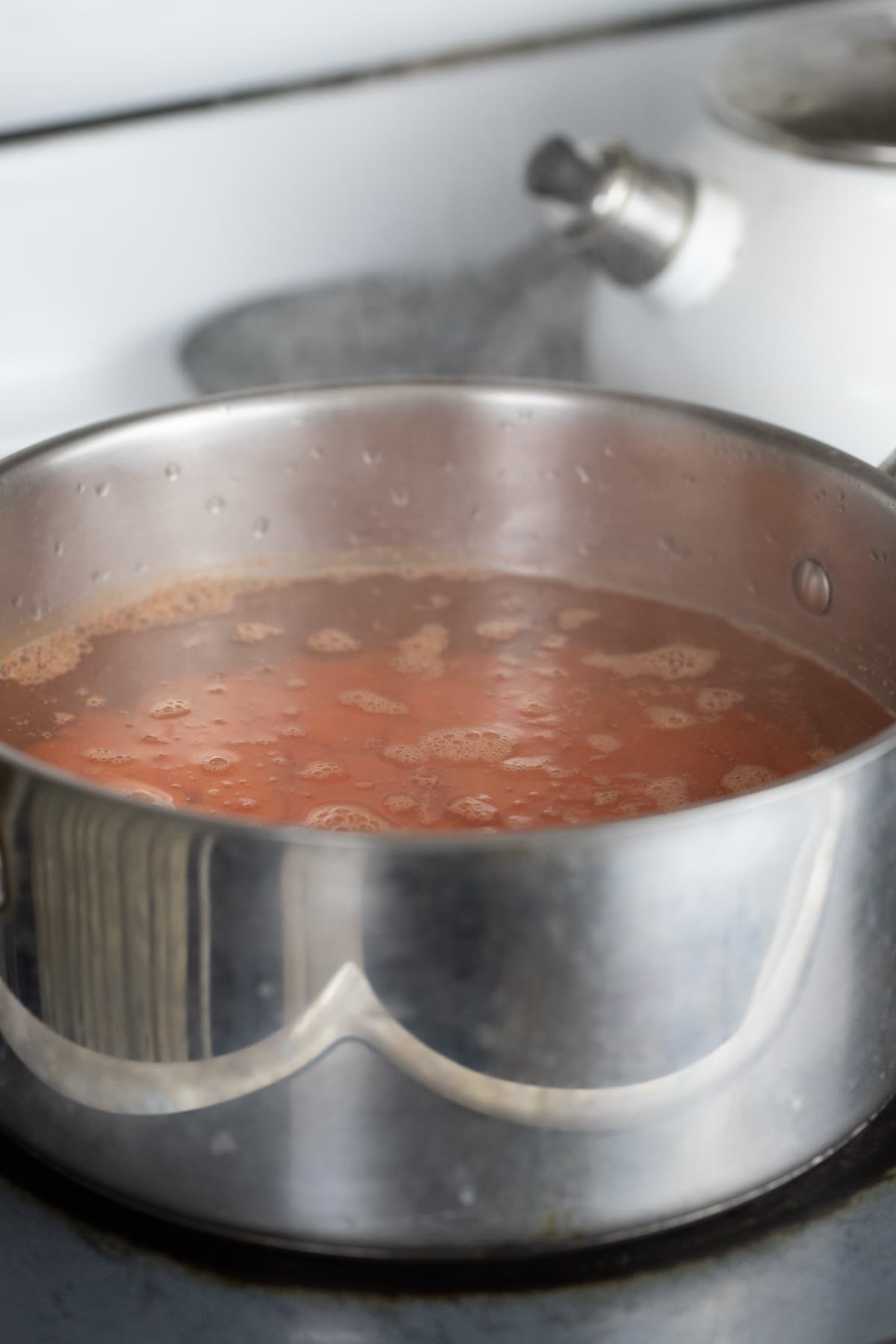
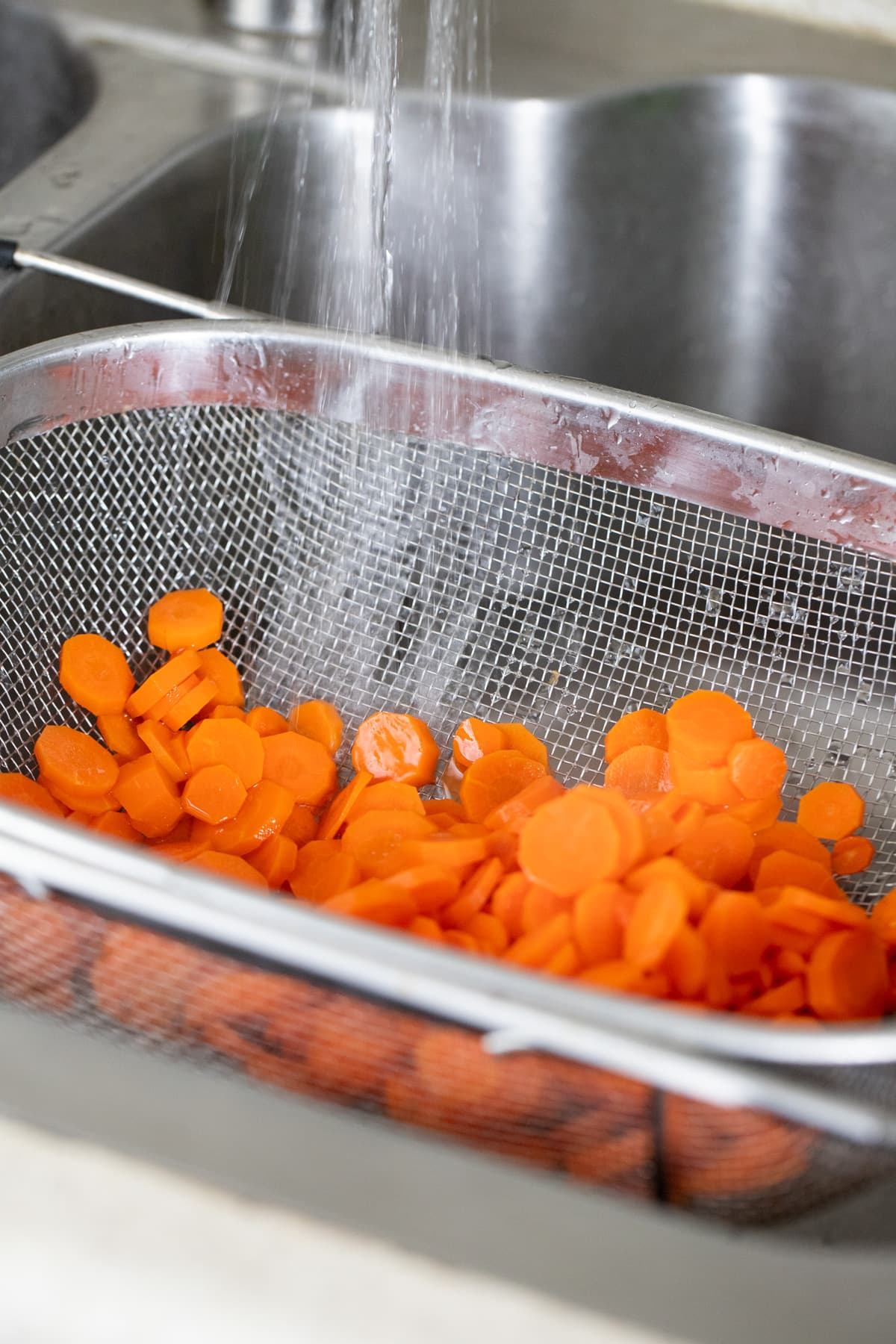
Step two – Blanch the carrots. This is a step that we don’t do with all vegetables before dehydrating but it’s an important step when dehydrating carrots, so make sure not to skip it. Blanching will…
- Kill all bacteria that might have been left behind from the soil the carrot grew in
- It will help us preserve the color of the carrots
- And it helps us preserve the texture of the carrots
To blanch the carrots, fill a pot with water. Set on the stovetop and let it come to a boil. Add the carrots (in batches if you are processing many of them) and let them rest in the water for 3 minutes or so. Then, transfer the carrots into a strainer and run cold water on them for a minute or two to stop the cooking.


Step three – dehydrate. Transfer the carrots onto the trays of the dehydrator and set them in one layer. Dehydrate at 125 degrees Fahrenheit for 12 hours. For coins like mine, this was enough. If you’re dehydrating diced carrots or large pieces you might need to add a few more hours. If you’re dehydrating shredded carrots, 6-8 hours will probably be enough.

How to Store Dehydrated Carrots…
Once the carrots are dry, let them cool for a few minutes and then transfer them to an air-tight container. You can vacuum seal them or use zip-lock bags, however, in my opinion, jars with two-piece lids work best for storage and are beautiful on the shelf!
How to Condition Dehydrated Vegetables…
If you’re going to store your dehydrated carrots for the long term, make sure to condition the carrots. This means that after storage, every day for about a week, check to make sure that there is no moisture on the inside of your air-tight container. If you spot moisture, remove the carrots and dehydrate them again for a few more hours. Then transfer to an air-tight container and condition again. If, after a week, there is no moisture your carrots are OK to be stored for the long term at room temperature.
How to Rehydrate Carrots…
- In boiling water – pour boiling water on the carrots and let them rest in the water for 15-30 minutes.
- In cool water – add the carrots to a bowl of cool water and let them rest there for a few hours until they are fully rehydrated. You can also place the bowl in the fridge overnight.

How to Use Dehydrated Carrots…
- If you rehydrated your carrots, you can use them in any way that you usually use carrots, in any recipe.
- If you are adding your carrots to soups or stews, you can add them dry and they will rehydrate as the dish cooks. Try to add them to this delicious chicken chili or to this pumpkin soup.
How to Make and Use Carrot Powder…
One of the greatest things about dehydrated food is that you can turn it into a powder. To make carrot powder, place the dry carrots in a coffee grinder and grind them until you get a powder. Store your powder in jars at room temperature. Use your carrot powder for seasoning or add it to a mixed vegetable powder.
Frequently Asked Questions…
Yes. Drying foods in a proper dehydrator where you can control the temperature produces a better result and preserves the nutrition better, however, if you don’t have a dehydrator, you can follow the same prep instructions and then: line a baking sheet with parchment paper and add the carrots in one layer, turn your oven to its lowest temperature, and dehydrate your carrots this way. Of course, drying time will change so keep checking your carrots. Also, you might need to turn your baking sheet and/or turn the carrot slices halfway through.
Maybe you can with baby carrots, however, it is not recommended.
The cheaper Presto dehydrator is very popular and you can find it at any Walmart or online. It runs at a temperature of 165 degrees Fahrenheit and there is no way to control the temperature. Yes, you can use this kind of dehydrator to dry carrots. Again, for best results, we want to process vegetables at a temperature of 125 degrees Fahrenheit but a higher temperature will work as well. Drying time will probably be shorter, around 8-10 hours or so.
Yes, you can dehydrate frozen carrots. Make sure to let them thaw first. And you can also dehydrate canned carrots with no problem.
Yes! You can dehydrate carrot tops the same way you’d dehydrate herbs like oregano. Once dry, you can crush or make a powder to use to season dishes (If you are looking for ways to use carrot tops, also try this amazing carrot-top pesto).
Dehydrating carrots is a great way to preserve them. They can last on the shelf at room temperature for many many years and are easy to use. They are a great ingredient to have around.
More Dehydrating Tutorials…
- Drying Radish
- Dehydrating Beets
- How to Dehydrate Mushrooms
- Dehydrating Onions
- How to Dehydrate Jalapenos
- How to Dry Cayenne Pepper
- You can find all of my dehydrating tutorials here.
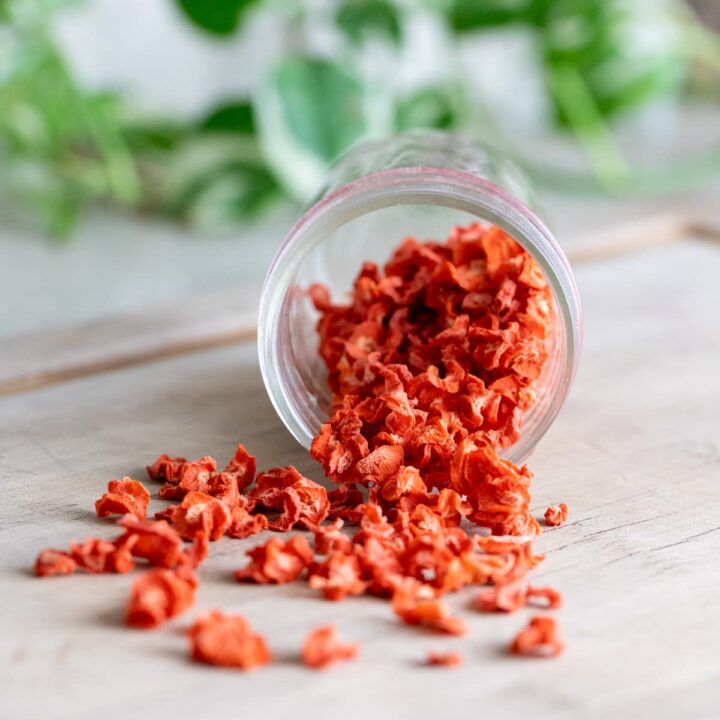
Dehydrating Carrots
Learn how to dehydrate carrots so you can keep them at room temperature for a long period of time.
Ingredients
- Carrots (I processed 8 medium carrots which produced 1/2 cup of dry carrot coins)
Instructions
- Wash and peel the carrots. Then dice, shred, or slice them. I sliced mine using a kitchen mandoline to make sure that the coins are uniform (about 1/4 an inch thick). You can also use a knife, of course. Do your best to make the pieces uniform so they all dry in the same amount of time.
- Fill a pot with water. Set on the stovetop and let it come to a boil. Add the carrots (in batches if you are processing many of them) and let them rest in the water for 3 minutes or so. Then, transfer the carrots into a strainer and run cold water on them to stop the cooking.
- Transfer the carrots onto the trays of the dehydrator and set them in one layer. Dehydrate at 125 degrees Fahrenheit for 12 hours. For coins like mine, this was enough. If you are dehydrating diced carrots or large pieces you might need to add a few more hours. If you are dehydrating shredded carrots, 6-8 hours will probably be enough.
- Once the carrots are dry, let them cool for a few minutes and then transfer them to an air-tight container. You can vacuum seal them or use zip-lock bags, however, in my opinion, jars with two-piece lids work best for storage and are beautiful on the shelf!
- If you’re going to store your dehydrated carrots for the long term, make sure to condition the carrots. This means that after storage, every day for about a week, check to make sure that there is no moisture on the inside of your air-tight container. If you spot moisture, remove the carrots and dehydrate them again for a few more hours. Then transfer to an air-tight container and condition again. If after a week there is no moisture your carrots are ok to be stored for the long term at room temperature.
Notes
Frequently Asked Questions...
- Can I dehydrate carrots in the oven?
Yes. Drying foods in a proper dehydrator where you can control the temperature produces a better result and preserves the nutrition better, however, if you don’t have a dehydrator, you can follow the same prep instructions and then: line a baking sheet with parchment paper and add the carrots in one layer, turn your oven to its lowest temperature, and dehydrate your carrots this way. Of course, drying time will change so keep checking your carrots. Also, you might need to turn your baking sheet and/or turn the carrot slices halfway through. - Can I dehydrate whole carrots? Maybe you can with baby carrots, however, it is not recommended.
- I can’t control the temperature on my dehydrator, can I still use it?
The cheaper Presto dehydrator is very popular and you can find it at any Walmart or online. It runs at a temperature of 165 degrees Fahrenheit and there is no way to control the temperature. Yes, you can use this kind of dehydrator to dry carrots. Again, for best results, we want to process vegetables at a temperature of 125 degrees Fahrenheit but a higher temperature will work as well. Drying time will probably be shorter, around 8-10 hours or so. - Can I dehydrate frozen carrots? What about canned carrots?
Yes, you can dehydrate frozen carrots. Make sure to let them thaw first. And you can also dehydrate canned carrots with no problem. - Can I dehydrate carrot tops?
Yes! You can dehydrate carrot tops the same way you’d dehydrate herbs like oregano. Once dry, you can crush or make a powder to use to season dishes (If you are looking for ways to use carrot tops, also try this amazing carrot-top pesto).
Nutrition Information:
Yield: 1 Serving Size: 1/2 cupAmount Per Serving: Calories: 16Total Fat: 0gSaturated Fat: 0gTrans Fat: 0gUnsaturated Fat: 0gCholesterol: 0mgSodium: 27mgCarbohydrates: 4gFiber: 1gSugar: 2gProtein: 0g

Hi! I’m Lady Lee. I help homesteaders simplify their homesteading journey while still producing a ton of food! I am a single mother of four, I was born in Israel and raised in an agricultural commune called a Kibbutz. Now I homestead in central NC.



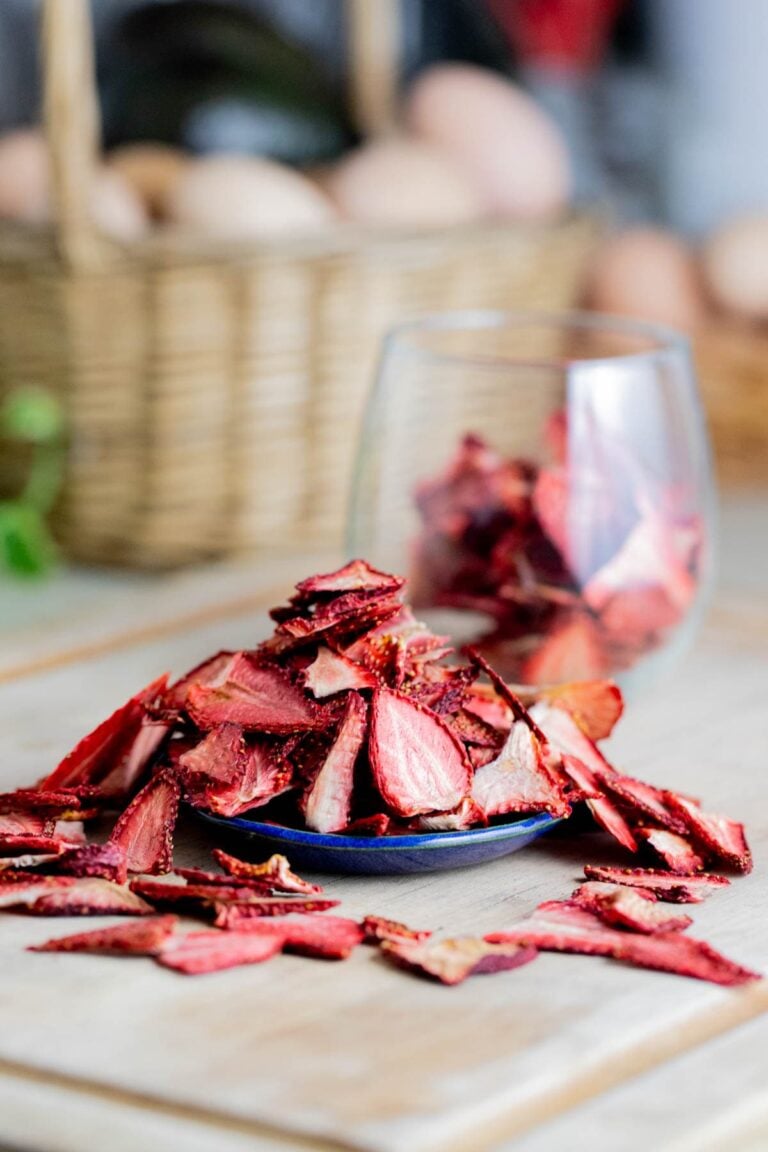
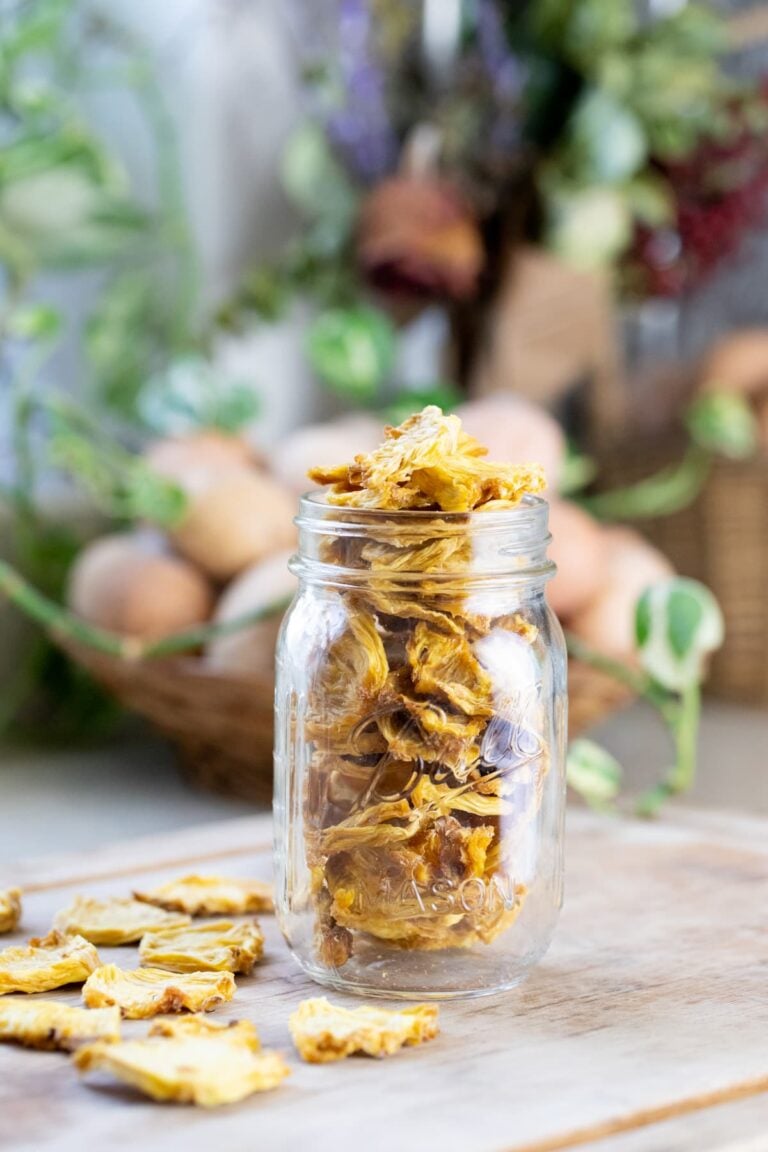
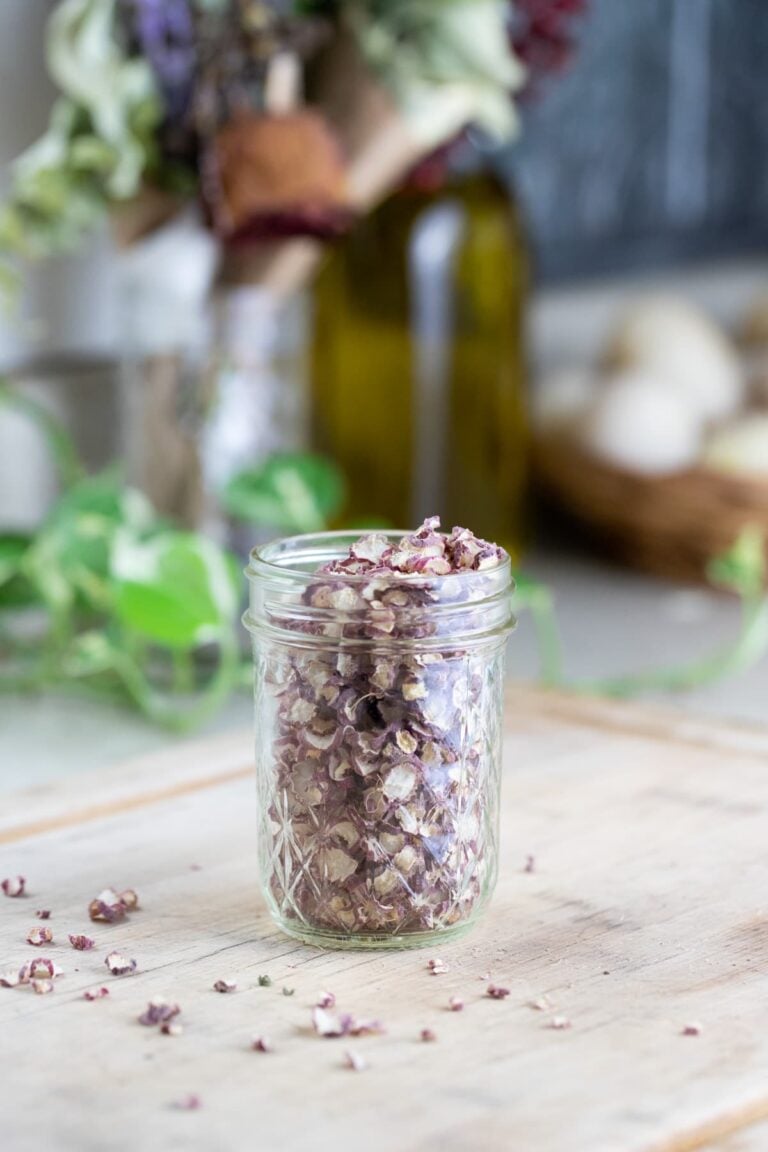
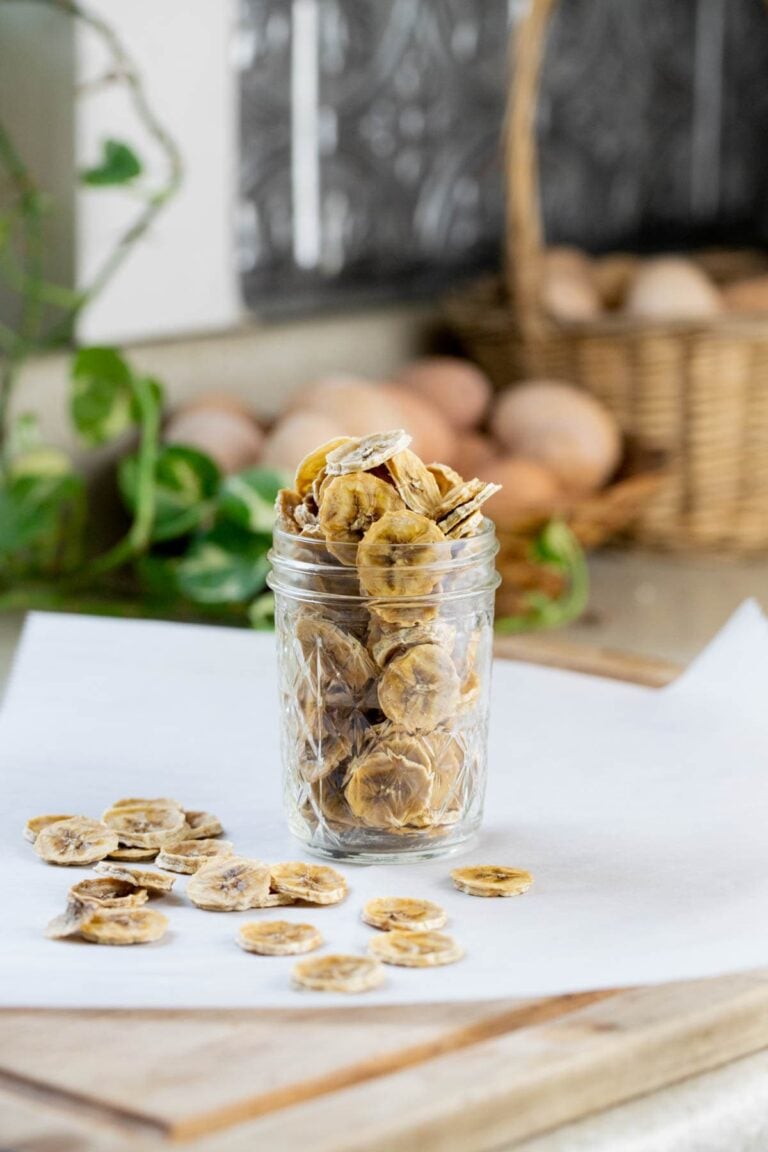
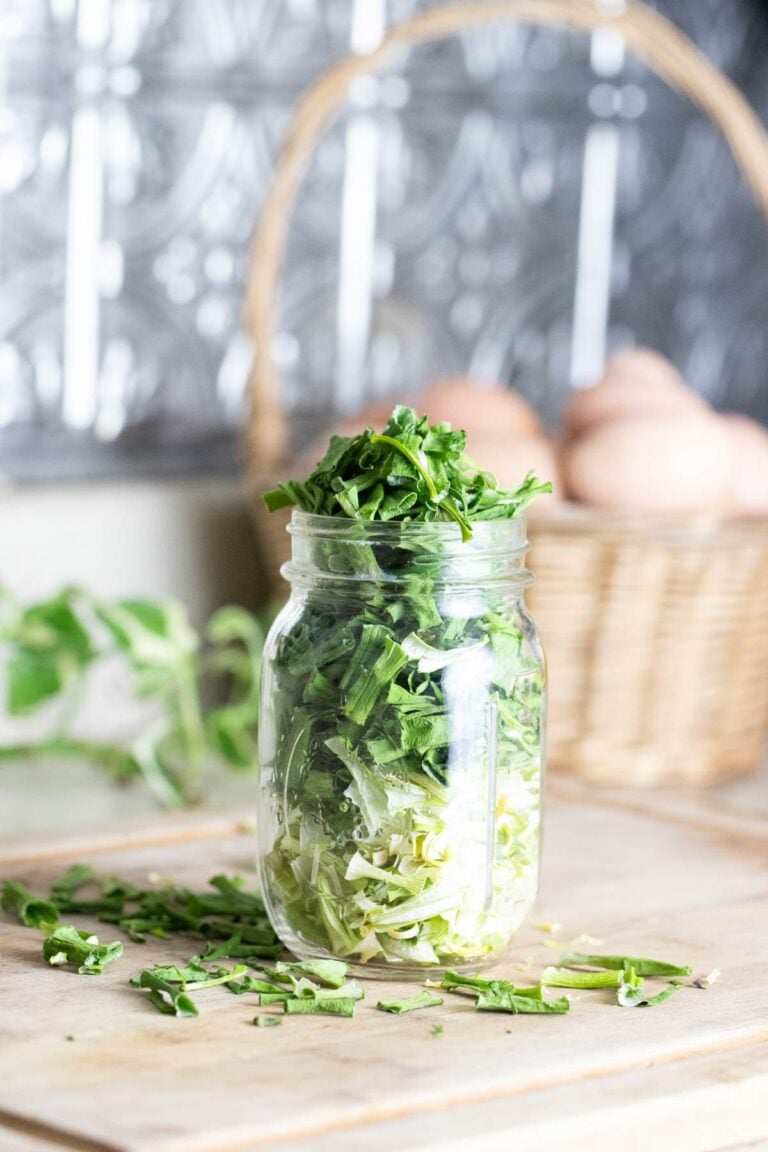
On the Print Out recipe the dehydrating time is listed as 12 minutes.
Ha! Thanks for letting me know!